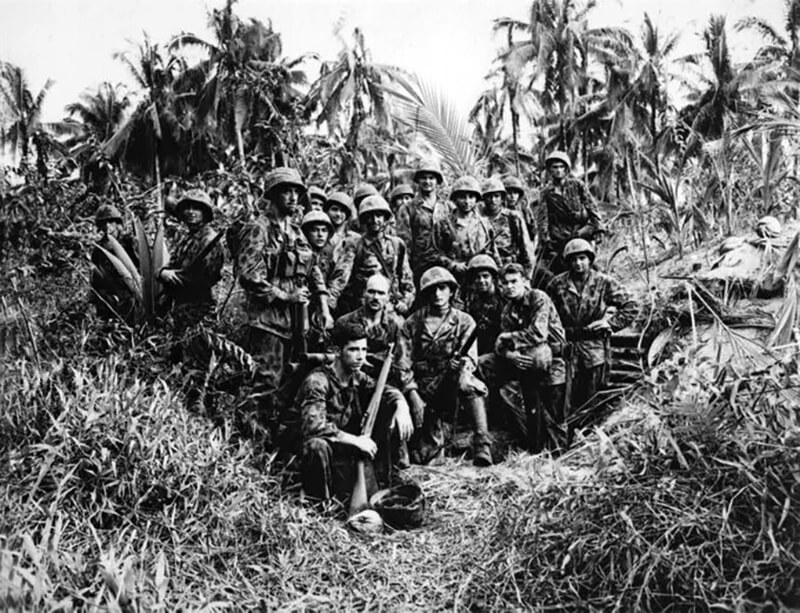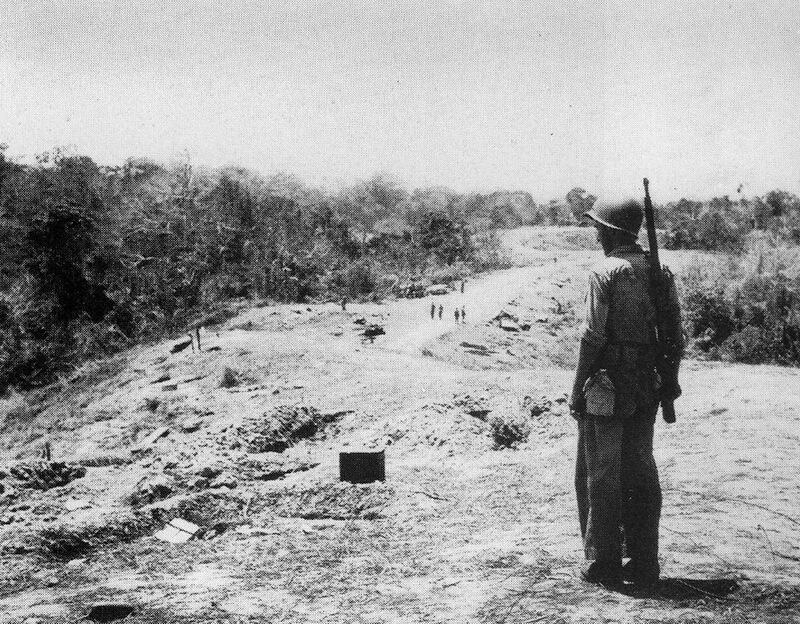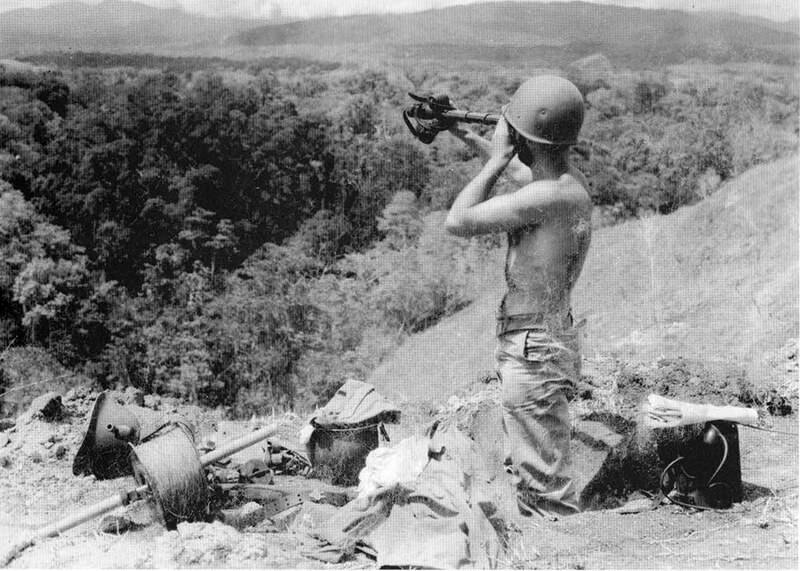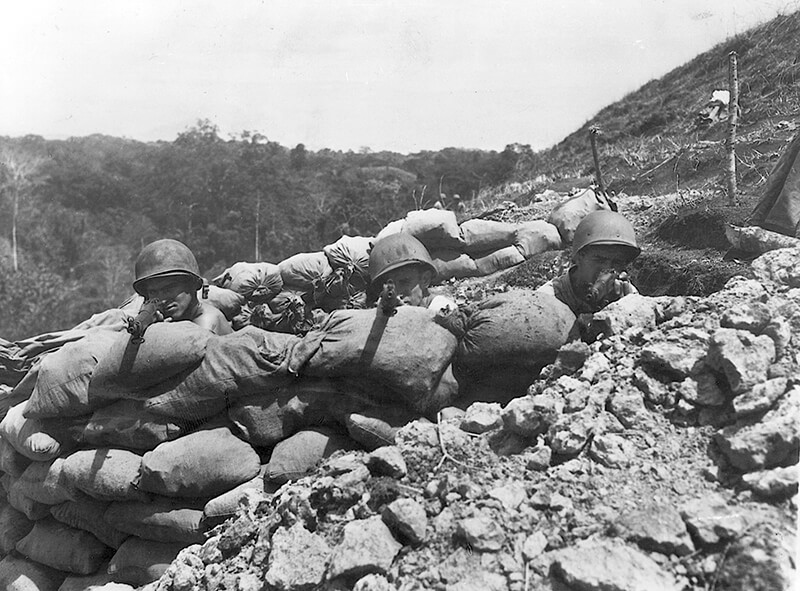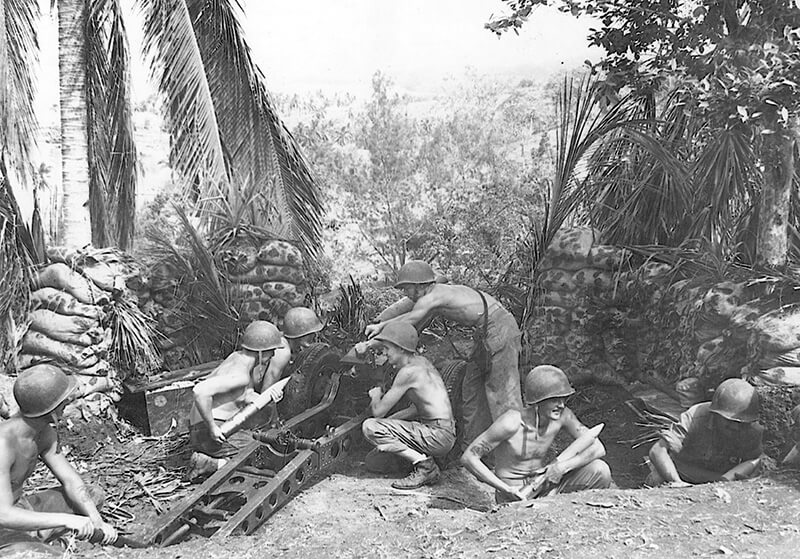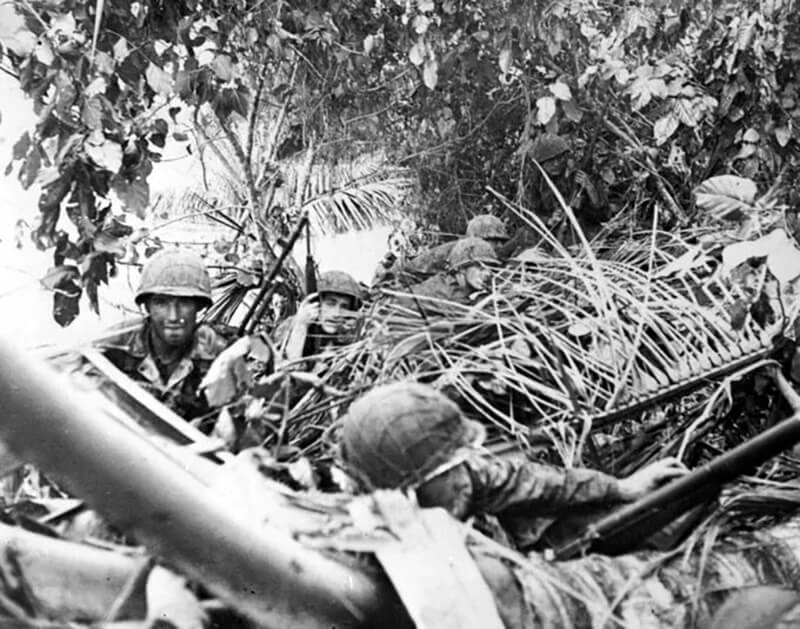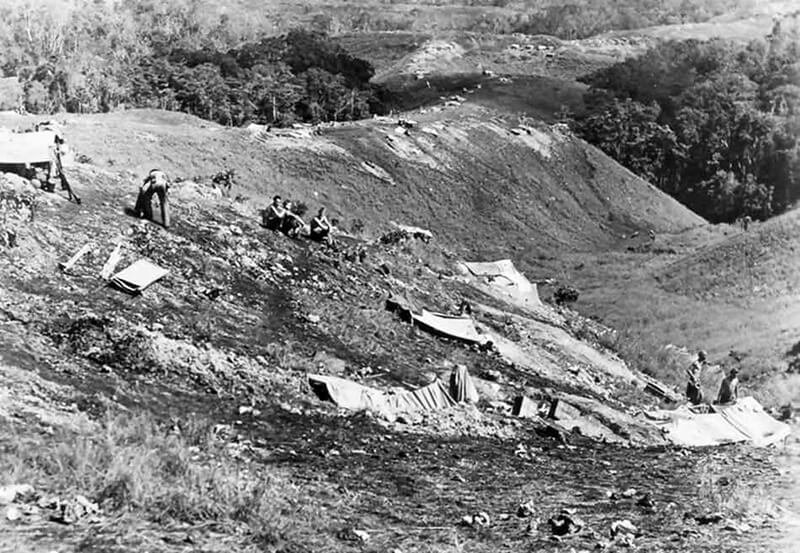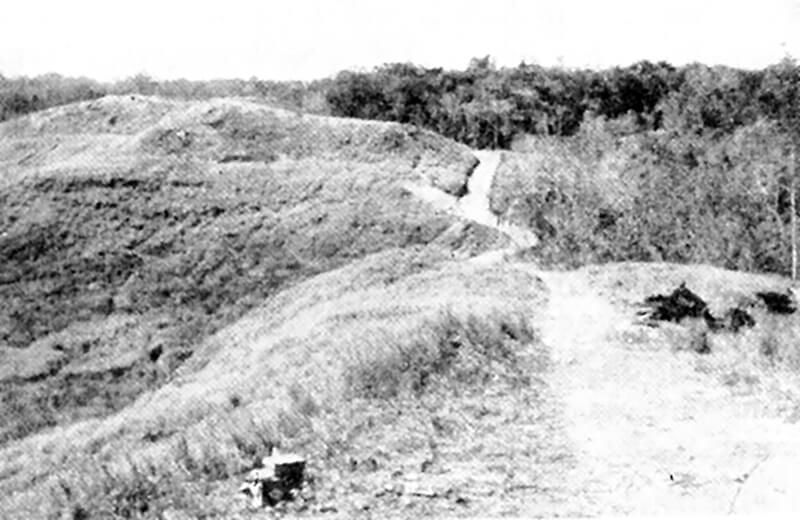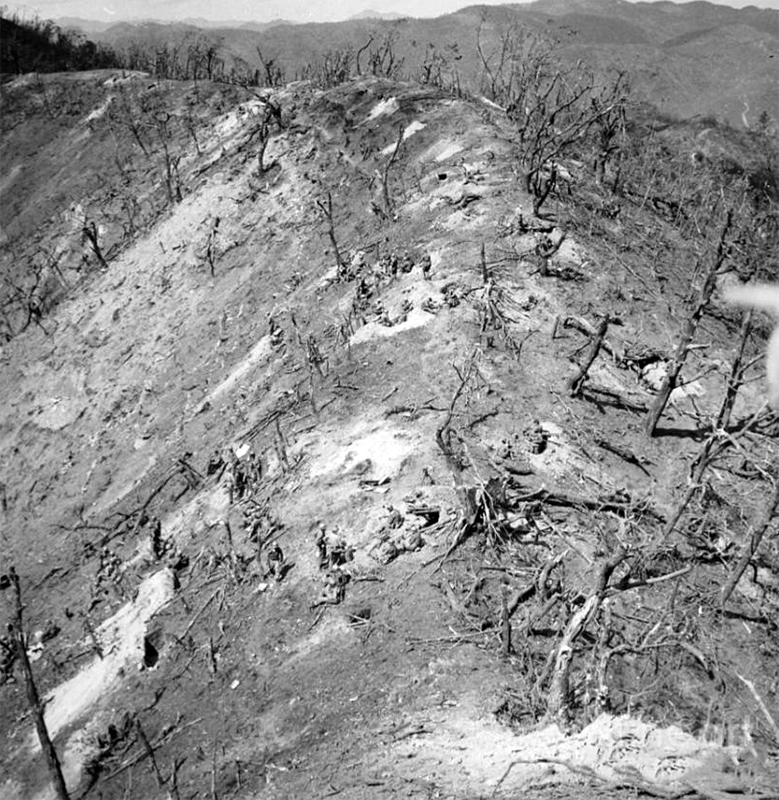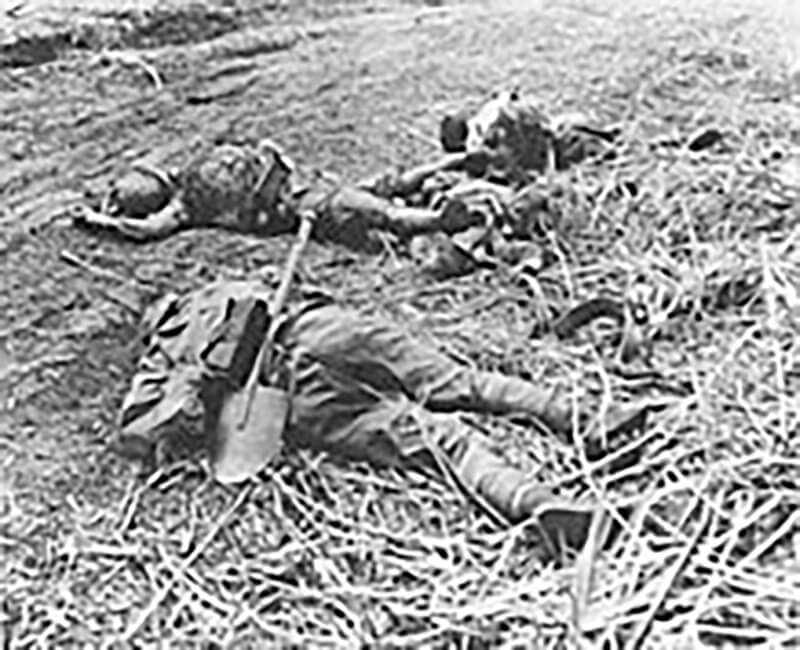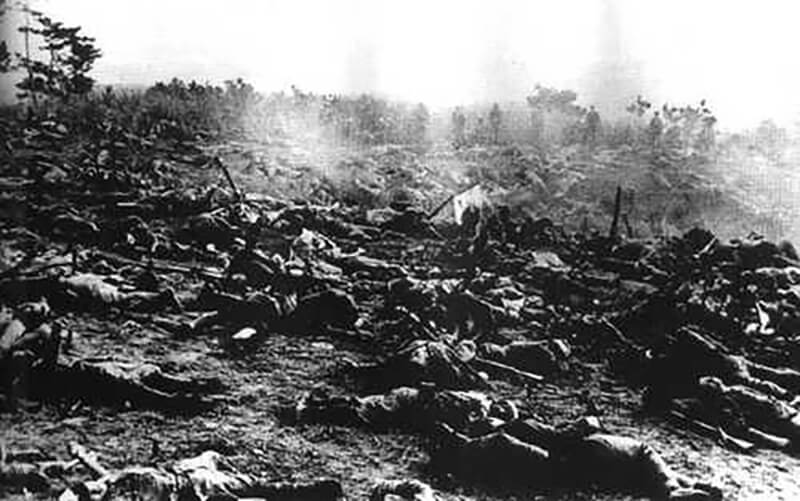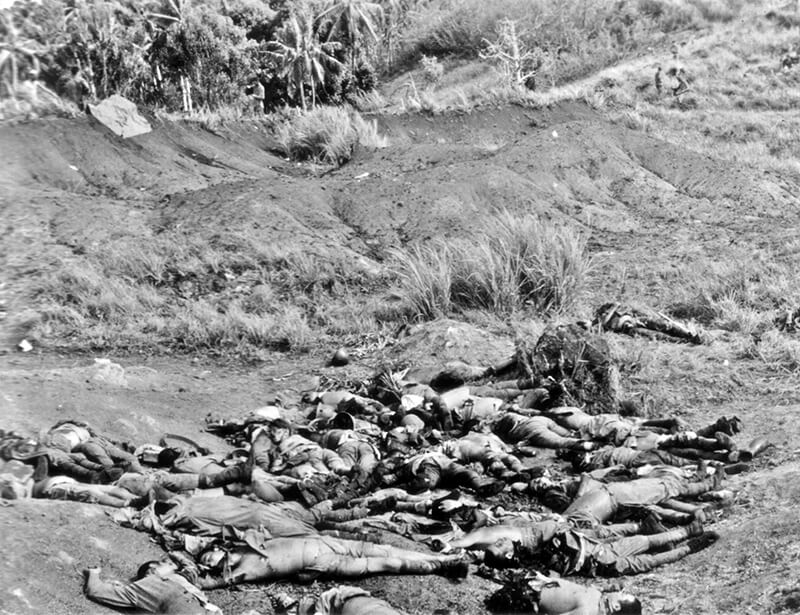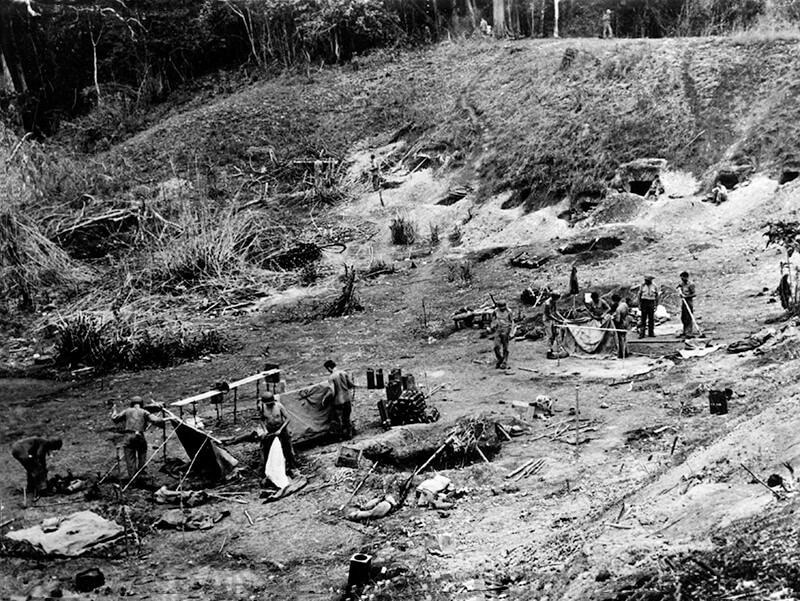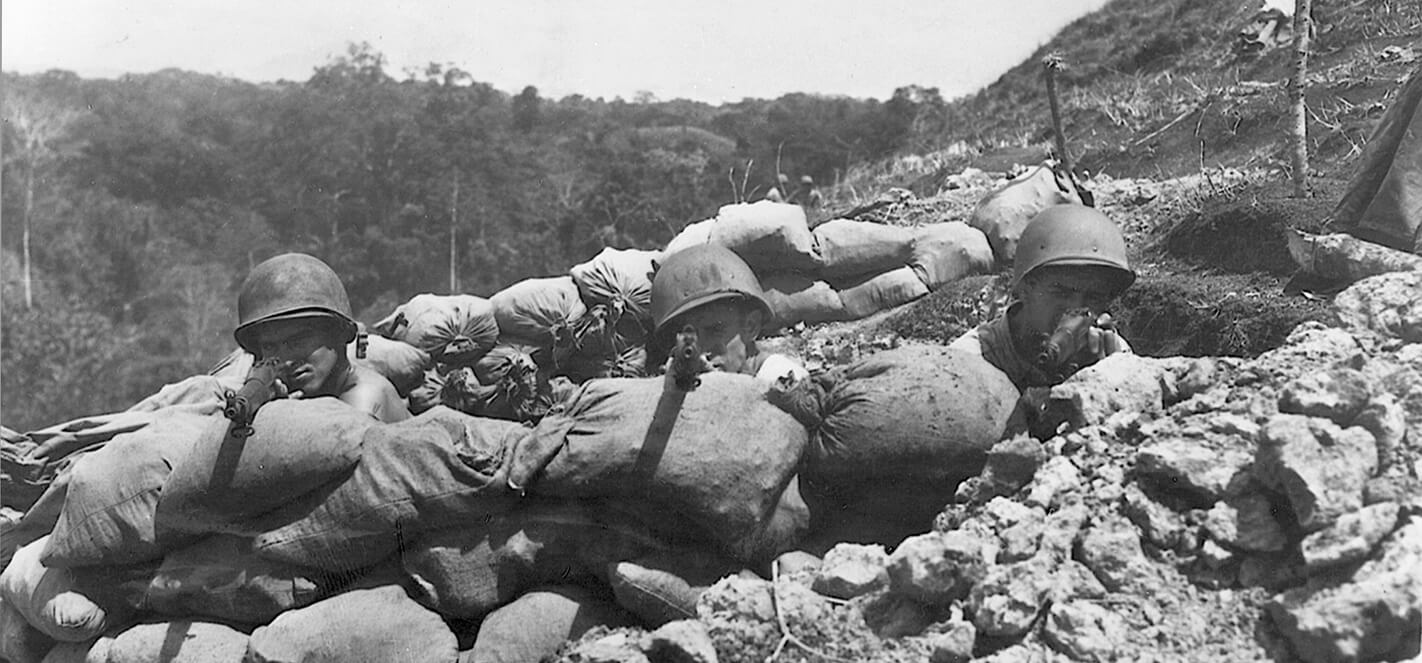| Page Created |
| June 17th, 2024 |
| Last Updated |
| May 21st, 2025 |
| United States |
 |
| Special Forces |
| Raider Battalions Marine Parachute Battalions |
| September 10th, 1942 – September 15th, 1942 |
| Edson’s Ridge |
| Objectives |
- Defence of Henderson Airfield by blocking Japanese forces moving in from the East.
| Operational Area |
| Allied Forces |
- 1st Marine Parachute Battalion
- 1st Raider Battalion
- 2nd Battalion, 5th Marines, 1st Marine Division
- 5th Battalion, 11th Marines,1st Marine Division
| Axis Forces |
- 35th Infantry Brigade (川口支隊, Kawaguchi Shitai)
- 124th Infantry Regiment
- 1st Battalion
- 2nd Battalion
- 3rd Bataillon
- 2nd Battalion, 4th Infantry Regiment
- 124th Infantry Regiment
| Operation |
On September 9th, 1942, Lieutenant Colonel Merritt “Red Mike” Edson consults with division planners to assess the growing threat near the perimeter. Intelligence officers analysing captured Japanese documents confirm that a force of 3,000 troops is advancing through the jungle southwest of Tasimboko. Edson is convinced they intend to attack the unguarded southern section of the perimeter. Examining aerial photographs, he identifies a grass-covered ridge that points directly toward Henderson Field, resembling a natural approach route. Drawing on his extensive experience in jungle warfare and with Japanese tactics, Edson predicts they will use the ridge for a night assault, the only time they can count on naval fire support. Though initially sceptical, General Vandegrift permits Edson to reposition his raiders and parachutists on the ridge to avoid Japanese bombardments near the airfield.
On September 10th, 1942, the Marine Raiders and Marine Parachute Battalion relocate to the ridge, which falls within the 3,600-metres defensive line maintained by the 1st Marine Division east of the Lunga River.
Edson organises his two depleted battalions along the spine of the ridge. A Marine Parachute Company holds the left flank, with the remainder of the battalion echeloned to cover the side. Two Marine Raider companies take the right, anchoring on the Lunga River, with a lagoon separating their positions. Machine guns are assigned to the forward units, while the weakened reserve, consisting of remnants from Company D, is positioned at the rear. Edson establishes his command post on Hill 120, just behind the frontline. Thomas, commanding the reserve 2nd Battalion, 5th Marines, 1st Marine Division, positions his men between the ridge and the airfield, ready to reinforce the defence.
| Kawaguchi Detachment |
The Kawaguchi Detachment originates from the 35th Infantry Brigade, which Japan’s high command deploys to Guadalcanal in an attempt to reclaim Henderson Field from U.S. Marines. The Japanese cpmmanders believe a single offensive is sufficient to achieve victory.
Major General Kiyotake Kawaguchi commands the detachment. The core unit is the 124th Infantry Regiment, which is reinforced by elements of the 2nd Battalion, 4th Infantry Regiment, along with support units. The total force numbers around 3,500 troops. These troops are transported from Truk via the Tokyo Express, Japan’s nightly naval resupply operation.
Between September 4th, 1942 and September 6th, 1942, Kawaguchi’s forces land at Taivu Point, approximately 30 kilometres east of Henderson Field. However, part of the force is mistakenly landed at Kokumbona, west of the airfield, leading to logistical complications.
After landing, Kawaguchi assembles his forces at Taivu Point, where Colonel Akinosuke Oka’s detachment is already engaged in skirmishes with U.S. Marine patrols. The Japanese plan to launch a night assault from the south, aiming to overwhelm U.S. defences before an effective counterattack can be mounted.
The Japanese believe they will be able to advance swiftly through the jungle and underestimate the strength of the U.S. Marines. Despite orders to move quickly, the thick jungle and rugged terrain slow the troops significantly. Many soldiers arrive at their attack positions exhausted and disorganised, weakening their ability to launch an effective assault.
| Kawaguchi Attack Plan |
Major General Kiyotake Kawaguchi divides the 124th Infantry Regiment, the core of the Kawaguchi Detachment, into several battalions that each have specific roles in the attack on Edson’s Ridge. The regiment is composed of experienced but exhausted troops who have been rapidly redeployed without sufficient preparation for the dense jungle warfare of Guadalcanal.
The 1st Battalion, 124th Infantry Regiment, led by Major Masao Tamura, takes the central role in the attack. This battalion is assigned the task of breaking through the U.S. Marine defensive lines at the centre of Edson’s Ridge. However, the battalion encounters fierce resistance and suffers heavy casualties due to well-coordinated American artillery and machine-gun fire.
The 2nd Battalion, 124th Infantry Regiment, under the command of Major Yukichi Kokusho, advances on the right flank of the main attack force. This battalion is expected to outflank the Marine positions and cut off potential reinforcements. However, dense jungle and difficult terrain slow its advance, leading to delays that prevent it from achieving its objective before the Marines reinforce their defensive positions.
The 3rd Battalion, 124th Infantry Regiment, commanded by Major Seiji Hiramatsu, is positioned on the left flank. This battalion faces an equally daunting challenge as it attempts to manoeuvre through the jungle to execute an envelopment tactic. The rough terrain and limited visibility hinder communication and coordination, leading to further delays and confusion among the troops.
The Oka Detachment, consisting of approximately 600 men under Colonel Akinosuke Oka, is positioned west of Edson’s Ridge. Their objective is to create a diversion by launching attacks from the western flank. However, they struggle to engage in coordinated attacks due to the dispersed nature of their deployment, and their efforts fail to draw U.S. forces away from the main defensive line.
The remnants of Colonel Shoji’s force, composed of approximately 650 men from the failed earlier assault by Colonel Ichiki, are deployed to attack from the east. However, their numbers are too depleted to mount a significant threat, and their assault is repelled with heavy losses.
| September 12th, 1942 |
The Marine’s hopes for respite are dashed as Japanese aircraft bomb their new position on September 11th, 1942 and September 12th, 1942. Reports from native scouts and contact with enemy forces confirm the advancing Japanese column’s presence. Despite limited resources, the Marines work to fortify their defences. Barbed wire is scarce, sandbags and engineering tools are unavailable, and the coral soil thwarts attempts to dig trenches. The jungle flanking the ridge conceals enemy movements, and illness and poor nutrition further weaken the Marines.
Meanwhile, Japanese commander General Kawaguchi faces challenges of his own. His troops struggle to traverse dense jungle and steep ridges, exacerbated by his decision to leave behind artillery and supplies. His forces are reduced to 2,500 men for the main assault after deploying one battalion as a diversion. On the evening of September 12th, 1943, sporadic contact occurs along the ridgeline, and by 22:00 hours, it is estimated that two understrength Marine Parachute Companies and Raider Company B of face at least two enemy battalions.
A pre-assault strike by 40 Japanese aircraft inflicts significant damage on the airfield. By sundown, Kawaguchi has only three of his five battalions (2,506 men) in position for the attack, staged in front of Edson’s combined Parachute/Raider Battalion. At 20:45, Colonel Edson receives reports of Japanese movement to his front and calls for artillery fire. The 5th Battalion, 11th Marines Regiment responds with an artiller barrage. The Japanese attack begins in earnest at 21:30 when aircraft drop flares, and a cruiser and three destroyers shell the perimeter. Initial attacks concentrate near the lagoon, exploiting gaps in the Marines’ line. Company C of the Marine Parachute Battalion is isolated and withdraws, but the Marine Raiders on the ridge remain relatively secure. Kawaguchi launches his first attack against the centre and right of the line. By 22:00 hours, it is estimated that two understrength U.S. Marine parachute companies, plus Company B (minus one platoon) of the 1st Raider Battailon, face at least two enemy battalions.
The Japanese achieve limited success due to the terrain, darkness, and confusion.
| September 13th, 1943 |
Throughout the night, Kawaguchi’s forces launch over a dozen attacks, attempting to break the Marines’ defence on the Ridge. This action fractures the Kawaguchi Force’s cohesion, forcing the remnants to retreat around Mount Austen toward Kokumbona, where they cease to be a significant threat. Kawaguchi repositions his troops and prepares for a major offensive the following night.
During the morning, a Japanese reconnaissance flight is followed by a Japanese bombing raid with 26 bombers and 12 fighter escorts. Uncertain of the airfield’s ownership, they mistakenly bomb and strafe Taivu Point, attacking their own forces. The Cactus Air Force (Nickname for the ensemble of Allied air power assigned to the island of Guadalcanal) shoots down several aircraft and straves the retreating Japanese Forces. In the event, the Allied aircraft suffer several losses.
Throughout the day, as Major General Kiyotaki Kawaguchi prepares to attack, while the Marines use daylight, to dig in despite periodic sniper fire. Edson shortens the defence line by nearly 100 metres to force the Japanese to cross open ground under automatic-weapons fire. He improves the fields of fire, lays wire, and digs deeper fighting holes. The 1st Marine Division places its reserve, the 2nd Battalion, 5th Marines Regiment, behind Edson’s position.
The Japanese ground assault begins shortly after dark at 18:30. All three of Major General Kiyotaki Kawaguchi’s battalions attack. Japanese forces breach the right flank of Company B, but inexplicably fail to exploit the gap. By 21:00, Japanese soldiers mass around the southern end of the ridge, chanting and preparing for a frontal assault. Edson reinforces the area around Hill 120 with reserves from Companies C and A.
The Marines fight hard and use artillery danger close to their positions to repel the assaults. Despite their efforts, they are forced to fall back up the ridge, getting closer to the airfield. Once the withdrawal is complete, 300 Marines set up a tight perimeter around the knoll, later known as Edson’s “Bloody Ridge.” Colonel Edson walks artillery fire up the hill until it is danger-close again. The steep terrain makes grenade use easy and effective. The Japanese initiate each attack with a flare.
Around 22:00, Kawaguchi’s right wing finally enters the fight, supported by mortar and machine gun fire. They engage the 3rd Battalion, 1st Marine Regiment. Despite their best efforts, the Marines struggle to maintain cohesion, and parts of the line fall back. Edson personally stabilises the situation, rallying his men with the order: “Nobody moves; just die in your holes.” The Japanse assault becomes disorganised, and they become entangled in barbed wire before withdrawing, losing 27 men, including the battalion commander. The Marines suffer four killed and three wounded.
| September 14th, 1943 |
That night U.S. Artillery plays a critical role in the battle. The 5th Battalion, 11th Marine Regiment fires 1,992 105-mm howitzer rounds on the Japanese attackers, inflicting the majority of Kawaguchi’s casualties. The Japanese are exhausted, and their attacks falter under heavy Marine artillery fire. A counterattack by elements of the 1st Marine Parachute Battalion secures the left flank.
At 04:00, after nearly 10 hours of defence, the 2nd Battalion, 5th Marines, 1st Marine Division reinforces Colonel Edson’s lines with their reserve. Two more Japanese assaults occur, and in the last at 05:30, about 60 Japanese soldiers break through the lines. However, they are quickly overrun by two companies from the U.S. Marine 1st Engineer Battalion.
As dawn breaks, scattered Japanese forces remain in the jungle, and Marine patrols begin rooting out snipers. As the sun rises, the Cactus Air Force launches three P-39s from the 67th Fighter Squadron to engage Japanese targets on the ground. Two aircraft are hit by ground fire and forced to return to Henderson Field. The air battle culminates that evening with a Japanese attack by 19 aircraft from the light carrier Chitose. The U.S. shoots down 10 of the 19 aircraft with no losses.
Later that morning, the ridge is handed over to fresh Marines.
| September 15th, 1942 |
The Japanese ground forces attack again during the night with minimal effect. After these actions the unity of the Japanese Forces is destroyed. The remnants withdraw around Mount Austen towards Kokumbona and never again pose a viable threat.
| Aftermath |
The battle leaves 135 Marine Raiders and 128 Marine Parachutists as casualties, with 59 dead or missing. Japanese losses are severe, with 700 dead and most of the 500 wounded unlikely to survive their retreat. Colonel Edson, who commanded the raider-parachutist force, is awarded the Medal of Honor for his leadership during the battle. Major Kenneth D. Bailey receives a posthumous Medal of Honor for leading his men in hand-to-hand combat for over ten hours on the ridge.
| Multimedia |
